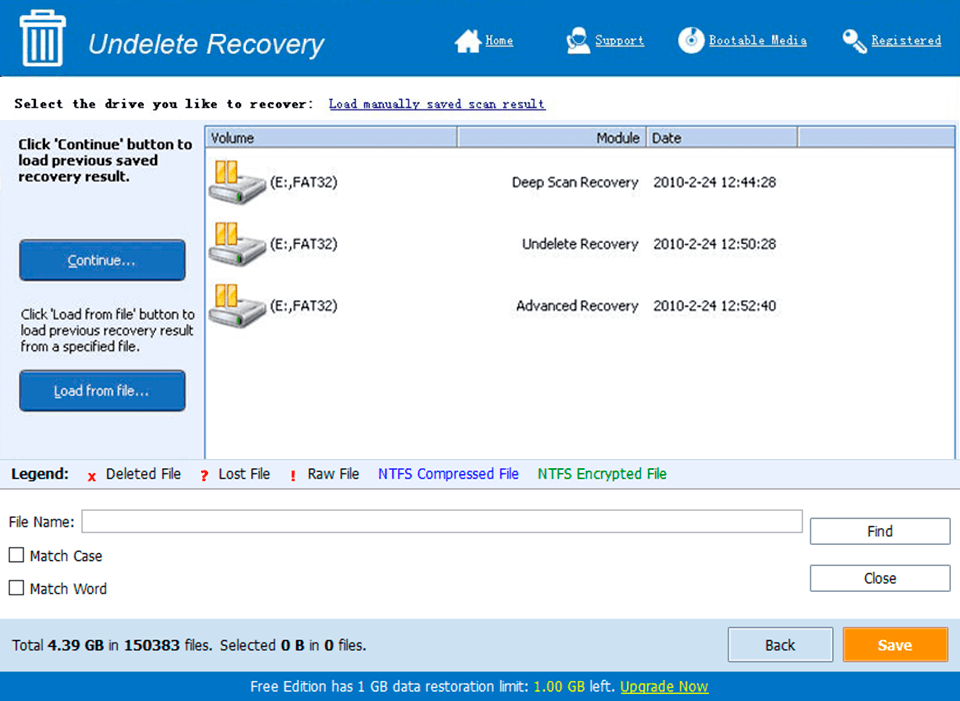
Crafting and survival games Archives

crafting and survival games Archives
Niffelheim
by Simple GameReviews | Nov 8, 2019 | All, Nintendo Switch, PS4, Steam, Xbox
Niffelheim from Ellada Games
Norse Mythology 2D side scrolling action survival game.
You choose one of four different locations/tribes and one of four different classes for your character. Each choice has its own strengths and weaknesses.
While in the character selection screen you will see all four of the characters classes.
- The Viking has a bonus resistance to Bleeding and Stun. He does decent damage and has a slow metabolism which causes your satiety to deplete at a slower rate. Once all of your satiety has been depleted you will start to lose health.
- The Valkyrie has decent defense, low damage output, and a very slow metabolism so your satiety depletes at an even slower rate.
- The Berserker does great damage, has bonus resistance to Bleeding and Poison, but has a fast metabolism which will require you to consume more plants to keep your satiety in check.
- The Shaman is resistance to all damage types, has great defense, but deals the lowest damage of all of the characters, and has the fastest metabolism and will deplete satiety faster than the others.
The starting location does not seem to matter as each location has the same resources you will need to collect as well as the same enemy types to fight. It’s only the appearance of the backgrounds that’s really different.
The premise of the story is that your character died a true and glorious viking death in combat. But instead of the promised reward of ascending to Valhallen, you have instead wrongfully fallen to Niffelheim, the viking version of Hell. Your goal is to make your way out of Niffelheim and ascend to Asgard where you belong.
Once you’ve made your world creation choices (class and tribe/location) you are unable to make any changes to them. Each tribe has a designated starting location so choosing one dictates the other.
The artstyle is hand drawn and looks greats. The sound track is pleasant too. However, the audio is plagued with technical issues and does not live up to the quality that the art work deserves. While playing we found several issues where the audio cracks, pops, stutters, and cuts out. The beginning cutscene that sets up the whole story is a perfect example of some of the audio issues. These were consistent across every load of the game and across multiple consoles.
The game only allows you to have one game save file per gamertag. This is a little odd, very frustrating, and inconvenient. Having to delete your only save to try another class or clan seems ridiculous and makes you very unlikely to try different things once you’ve started playing the game and grinding to collect items and resources.
You will spend most of your time grinding for and managing resources. You be running around cutting down trees for wood, collecting plants, and killing animals. These resources are needed both to recover your health and for crafting. You’ll also use them for upgrading your castle inside and out. Outside renovations include adding walls, towers with archers, and even a Citadel. On the inside you are able to build a Kitchen, Alchemy Lab, Sawmill, and Forge.
You’ll also need to keep track of your resources to replace your tools and weapons as they wear out. They have a health bar to let you know when they’re nearing the end of their life. As you upgrade your base, you’ll be able to craft better quality items.
As you explore the map you will find new locations, crypts, mines, dungeons, and a town. The town is in the middle of the map and contains the only merchant. He will let you buy and sell items and potions.
You will come across a few different types of enemies including armored skeletons, wolves, and spiders. Most of the variations in enemies seem to just be a color swap as they are otherwise identical in appearance, take the same amount of damage to kill, and don’t have any differences in their attacks. You’ll also encounter some of the larger almost boss type monsters like Stone Trolls, Giant Wolves, and Giant Spiders while exploring the mines you come across in your explorations.
The combat is very simple. You use one button to attack and one to block. The animations for your attack are based on how far away from the enemy you are. Depending on the distance you might do a sword swing or a kick on the smaller enemies. They do have both ranged and melee combat options but you can only have one equipped at a time. The attack button will attack with whichever weapon is currently equipped.
Since you are already dead, when you die from starvation or combat you will return as a spirit until you reconnect with your body. While in spirit form you are unable to attack, be attacked, or collect/harvest anything. Death also carries a penalty in the form of a decrease to the cap on your max health. Every death further decreases your max health. This is a semi-permanent penalty as the only way to restore the original cap is by consuming a very expensive potion.
To recover health you can eat meats, vegetables, or drink potions. Eating the meats and vegetables will also increase your satiety meter. They also provide another interesting way to recover health besides consuming things. Near your camp and in other areas around the map you will see thrones. Sitting on one of these will also cause your health to regenerate for as long as you remain seated.
One of the more confusing mechanics in the game revolves around the tutorial. There isn’t one. Except there is. Much of the time you’ll just be pressing buttons because they’re on the screen and just sort of figuring out what things do as you see the effect of pressing the indicated button. There is no on screen prompt or dialog to help guide you and introduce mechanics as you encounter them for the first time. We only found the actual in game tutorial when searching for the menu that was hidden in the back.
The game also gives you quests that you can complete for rewards like weapons, gold, or potions. Most of the quests are pretty simple and have basic requirements like collecting a certain amount of eggs or toadstools. You’ll end up completing some of the quests without ever even knowing they were there. Once you find the tutorial, if you browse around there is also a page where your quests are tracked.
Grindy 2D dungeon crawler-esque game. One part dungeon crawler, one part resource management grind-fest. Great art. Audio issues. No co-op or multiplayer on consoles. Single save file limits options for trying different things.
Niffelheim is available on Xbox One, Nintendo Switch, Playstation 4 and Steam. A digital copy of this game was provided to SimpleGameReviews for the purposes of reviewing the game.

Multiplayer survival-crafting games lack a succinct acronym or single genre-defining style, but they’re absolutely taking over the world of modern online gaming. Older MMORPG behemoths like World of Warcraft have begun a steady decline while there doesn’t appear to be any stopping the new juggernauts like ARK: Survival Evolved. These new breeds of shared sandbox worlds evolved from Minecraft and traditional MMORPGs that had dominated the last decade and a half of online gaming.
MMORPGS: The Rise and Fall
The modern video game industry grew up alongside the rise of the internet, from dial-up modems tying up phone lines to being able to stream games online and store your entire life in the cloud. Massively Multiplayer Role-Playing Games began cropping up as early as text adventures and crude pixelated games in the early 90s – most with exorbitant subscription fees that caused many a parent to faint when they saw their phone bill.
In the late 90s gaming began testing the waters of truly massive online servers with thousands of users. Emerging 3D technology helped shape new virtual worlds that players could only dream of a few short years prior. Ultima Online, EverQuest, and Asheron’s Call paved the way for even larger worlds and universes like Dark Age of Camelot, EVE Online, and Star Wars Galaxies.
The year 2004 alone saw three incredibly huge, genre-defining MMORPG releases: City of Heroes, EverQuest II, and World of Warcraft. You don’t need to be a gamer to recognize one of those games as the most popular MMORPG of all time, reaching over 10 million subscribers in 2014.
World of Warcraft wasn’t the first MMORPG but it is the last survivor of the traditional subscription-based model. WoW exploded the MMORPG market in a genre that was already seeing massive growth.
Major publishers began scrambling to concoct their own WoW. In the last decade we had the Matrix Online, Guild Wars 1 and 2, The Lord of the Rings Online, Age of Conan, Champions Online, Neverwinter, and Star Wars: The Old Republic. Even traditionally single-player franchises like Final Fantasy and The Elder Scrolls embraced MMORPG spin-off entries.

The MMORPG bubble began bursting nearly as quickly as it started. While everyone can have a different definition of what constitutes success and failure in the MMORPG world, the goal of all of these games was to produce ongoing gaming experiences that would last for years. Nearly every single monthly subscription model failed in the long run, with the 13-year old World of Warcraft being a notable exception.
Save for the occasional oddity, it’s unheard of for a MMORPG to launch with a subscription model these days. Nearly every MMORPG has had to completely shift their revenue model from subscription into either free-to-play with microtransactions or simply relying on an upfront box cost plus paid DLC. The Elder Scrolls Online represents the rare success story of the latter, shifting to a “buy-to-play” model one year after its release, and releasing its first major paid expansion earlier this year.
Your World, Crafted
But the traditional WoW-style MMORPG has become quaint when faced with the explosive new genre of Survival-Crafting games.
Minecraft changed everything. It birthed an entirely new genre based on gathering resources, shaping the world around you, and sharing it with others. And it didn’t require a monthly subscription.
This new genre of games has steadily risen in popularity over the last several years. Minecraft begat single-player survival adventures like The Long Dark, Stranded Deep, and Subnautica, 2D pixelated adventures like Terraria and Starbound, and online first-person worlds like Rust, Osiris: New Dawn, and ARK: Survival Evolved.
They take full advantage of a generation who’s grown up with high-speed internet, YouTube, and livestreaming. These games provide tense, unpredictable gameplay with heartbreaking losses and hard-fought victories, all in real-time.
This week alone sees the Early Access launch of two more online survival-crafting games – Dark and Light and Citadel: Forged with Fire. Both games could trace their genus back to ARK: Survival Evolved, which debuted on Steam Early Access in 2015 and is launching in a few weeks on August 8. These games effectively blur the line between the Massively Multiplayer Online games that were all the rage a decade ago and the new world order of Minecraft-like shared worlds and private servers.

Theme Park vs Sandbox
Most MMORPGs subsisted on the Theme Park concept. The world was set up like one grand amusement park, with everyone standing around ready to dole out quests to park-goers. It was fun to explore the park and ride the rides, but at some point you could see everything. Your mark upon the world typically ended with customizing your own character with bigger and better stuff. Regular expansions added new theme park zones to explore, but in the end it was your guild or friends that kept you coming back, not the rides or gear.
Many Survival-Crafting games generate a completely random, empty world. Your world. You, along with friends and/or random strangers (depending on the server), help create the world around you. There may be existing cities and NPCs in place, or a meticulously crafted island. But you construct the houses, tame the beasts, and assault player-built fortresses. It’s a sandbox waiting to be built.
 Their worlds aren’t quite as massive, instead relying on relatively smaller areas for more densely packed content and crowded neighbors who incite conflict. Servers are more democratized, with the best games offering both hardcore PvP options and more friendly cooperative atmospheres. The downside of free-form servers is they open up to hacking and cheating problems, which feels like an accepted trait that comes with the territory these games provide.
Their worlds aren’t quite as massive, instead relying on relatively smaller areas for more densely packed content and crowded neighbors who incite conflict. Servers are more democratized, with the best games offering both hardcore PvP options and more friendly cooperative atmospheres. The downside of free-form servers is they open up to hacking and cheating problems, which feels like an accepted trait that comes with the territory these games provide.
As a parent it can be difficult to navigate the murky world of online gaming. Due to the nature of building and sharing in these survival-crafting games, there’s an even greater risk of frustration, loss, and all manner of negativity, regardless of the game’s rating. Thankfully with so many games to choose from, it’s possible to steer your younger children in a direction you deem more appropriate, such as Dragon Quest Builders instead of Rust.
You can discuss with your children about what games they’re playing and why they’re playing them. Building a world together with friends can be an incredibly nurturing, positive experience at a time when many kids and teens feel they may lack control over their lives, or simply want to hang out with friends.
Only time will tell if this is the 2004 of Survival-Crafting games. We’ve seen some explosive growth in the last few years. According to Steam’s player counts, some of the more popular games in the genre like Rust and ARK: Survival Evolved hit 40-50,000 players every day, and both are still in Early Access. Meanwhile Final Fantasy XIV and The Elder Scrolls Online – hugely recognizable gaming franchises, enjoy a much more humble 10-15,000 players.
Since they don’t rely on monthly subscriptions the market may be much kinder than the MMORPGs of yesteryear. But one thing all these games have in common is they demand a large amount of time and dedication. You start with nothing and have to work hard to do everything, building your own theme park before you can ride any rides. It can be incredibly rewarding, as well as overwhelmingly frustrating.
Either way most gamers can only dedicate their time to one of these games at a time. It’s exciting to have so many new avenues to explore within a still relatively new genre. But history tells us it’s also a bubble preparing to burst, and only the best games will survive.
jeweledfrogcreations.com
Crafting games come in many different shades because they can both be their own genre or work as a large component of many different games. As long as you need to craft items to get ahead, be that a bow, a shovel, or a tasty meal, it counts. Crafting is obviously a big part of survival games, but there is the best crafting game for everyone. Games with many different moods and genres depend on your ability to get crafty.
However, there is one thing all crafting games have in common: they are always about the journey of discovery and the delight of finding new things to make and use. And these best crafting games encapsulate this feeling perfectly.
1. Dig or Die
Instantly recognizable as a crafting game inspired by Terraria, Dig or Die is a mixture of defense and crafting complete with side-scrolling and platforming elements. Your task is in the title – after crash landing on a strange alien planet, you need to get digging in order to find as many resources as possible before the inhabitants out for your hide come to knock on your door.
What makes Dig or Die special is that besides crafting items that will help you survive in a hostile environment and work on a new spaceship, you also build your own home and its defense systems. If you’re new to this type of building and crafting gameplay, Dig or Die is simple enough to quickly get you going.
2. Creativerse
This is probably the best Minecraft competitor, a free-to-play alternative to Mojang’s mega-hit with a more polished look and user-friendly menus. However, Creativerse does more than offer quality of life improvements over Minecraft. There’s a stronger focus on combat and subsequent enemy loot, and the variety in biomes makes it great for multiplayer role-playing.
The game is still being updated with features like camera modes and rotatable blocks, and there’s also a Creativerse Pro DLC, which includes a glider, stamina and inventory upgrades as well as the option to create your own worlds.
What’s New in the crafting and survival games Archives?
Screen Shot

System Requirements for Crafting and survival games Archives
- First, download the Crafting and survival games Archives
-
You can download its setup from given links:


